The HGU-56/P long ago replaced the SPH-5 as the standard rotary wing aircrew helmet in the US Army and US Air Force. At last week’s Warrior Expo, Ops-Core displayed a new variant of the Gentex HGU-56/P called the Aircrew Ballistic Helmet (ABH) which they’ve been developing along with the Air Force. It retains all of the features you are used to with the 56/P, but adds ballistic protection (110% of current levels).
The ABH now meets the F1 Fragmentation Resistance Standard and Gentex says that they’ve been able to do this without adding weight. Gentex is also offering a new ballistically enhanced version of the maxillofacial shield (MFS) with the ABH. The helmet geometry remains the same so you can continue to use the same accessories as you do with the current model.
www.gentexcorp.com (page is currently loading slowly)
Tags: Gentex, Ops-Core, Warrior Expo East



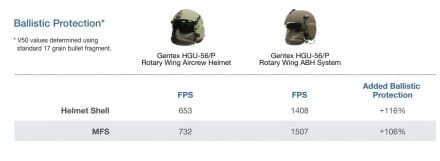
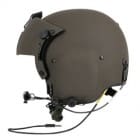
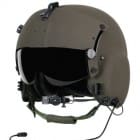

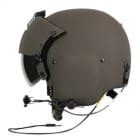
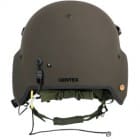
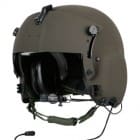
I feel like I should get this out of the way…
http://i865.photobucket.com/albums/ab219/willamjohn/IMG00964-20120604-1037.jpg
These are great-looking helmets aside from the material advances. Good on Gentex.
TK421! Why aren’t you at your post?
Haha…that’s the first thing I thought of. Did you see our TK-421 patch?
ROTFLMAO! EXACTLY!
So I’m not the only one thinking Imperial Stormtroopers then?
As a Star Wars kid, my first thought too!
Better protection, combined with the “I just shot everyone on Hoth” look that is so popular right now. The perfect blend of form and function!
Ops-Core manufactures it for Gentex or the other way around?
Gentex is the parent company of Ops-Core currently.
Did not know that. Thank you.
Aircrew helmets weren’t already ballistic?
I’m surprised.
It all comes down to threat mitigation. The point of an aircrew helmet is to protect the noggin from bumps while inside the aircraft and from cracking like an egg in the event of a crash. Those are traditionally the biggest threats to aircrew. Ballistic threats are much lower due to the environment while flying. You also have to consider weight and cost. Helo crews on the other hand face an increased risk of ballistic threats, this helmet is still not capable of stopping pistol caliber threats but is rather designed for fragment protection,
Never understood why the Navy and Marine Corps chose the vastly inferior HGU-84P over this helment
Why is the HGU-84P inferior?
I sometimes hit my forehead with the flat of my hand when I read these articles/advertising because they can seem to be brilliant until you read the fine print
This ‘new’ helmet shouts out a V50 of 1408 feet per second (fps) for a 17 grain fragment and this seems to be great, and is shouted as such in the article, “110% more than the previous helmet !!!! ”
– but put in context 1408 fps is about half of the specification asked for on the current Army helmet.
🙁
So although this is an improvement on the previous system, it is still only half what the US Army reckons it’s guys need for protection, and they are not hanging in the air with no armored protection – at least the grunts can hide in a hole in the ground .
Yes, it’s an improvement. They don’t have even that much protection now. Go back up and read my comments regarding ballistic protection. I spoke with two 160th guys at the show about this and their comments were that if it was going to be heavier than what they already wore, they weren’t interested.
The current in use helmet system is very heavy even with no extra protection, if you actually measure the full normal combat loadup eg comms, batteries, NVG mounts, air con connections, visor, face guard, impact liners, microphones etc.
It exceeds the maximum recommended load advised by the medics by about 2lbs + , so if anyone is spun around in a crash they have a high probability of injury.